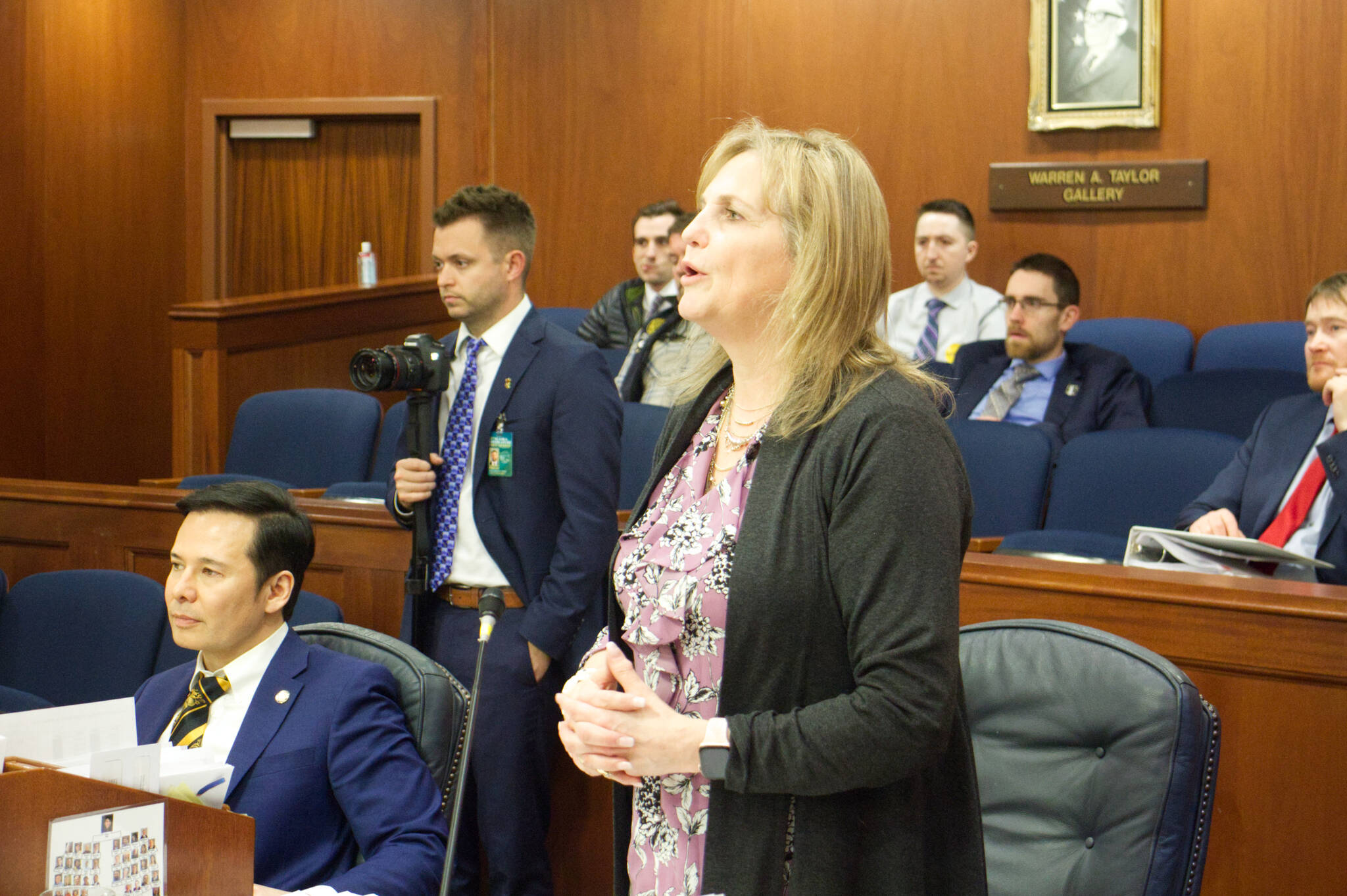The House is sending long hours trying to pass in its version of a budget before Easter, the Senate is discussing some kind of spending package deal with the governor and House, and it’s possible all that billion-dollar talk will be cheap if OPEC is successful in its effort to trigger a big increase in oil prices.
A one-time 11% boost to education funding is the most notable headline during the early stage of the House’s floor debate this week where dozens of budget amendments are being considered. The amount is far less than sought by educators who are also seeing a permanent increase in the state’s base student allocation formula that accounts for inflation.
“A BSA increase is unlikely to occur,” said state Rep. DeLena Johnson, a Palmer Republican who co-chairs the House Finance Committee and introduced the one-time funding, arguing the longer-term issue can be revised next year.
Nearly 100 amendments are being debated on the House floor this week, with House leaders saying they want to pass the budget itself by Thursday so members have a long Easter holiday weekend. But while there were many hours of alternating floor debate and at-eases where lawmakers huddled for off-the-record discussions, very few spending shifts occurred during the day.
Meanwhile, Senate leaders are pursuing a considerably more costly long-term hike with widespread support from educators, who among other things want the predictability of an ongoing increase while crafting budgets that typically are approved during spring. That difference, along with innumerable other areas where disputes exist such as calculating Permanent Fund dividends, will eventually be subject to negotiations between the two chambers before the scheduled end of session next month.
Senate President Gary Stevens, a Kodiak Republican, said he met with House leaders early Tuesday before that chamber resumed its floor debate on amendments. The Senate majority caucus also met with Dunleavy last Friday to discuss possible options for a compromise long-term spending plan — although participants declined to discuss specifics afterward.
“It was all about fiscal issues — the mood of the day for the next month and a half,” said state Sen. Bert Stedman, a Sitka Republican who co-chairs the Senate Finance Committee.
How tightly legislators budget — and what Gov. Mike Dunleavy subsequently chooses to nix with his line-item veto, may again come down to unexpected circumstances elsewhere in the world that have a big impact on the state’s bank balance. A potentially bountiful blessing occurred this week as OPEC surprisingly announced its cutting productionn, which causes prices to spoke about $80 a barrel on Tuesday compared with prices just above $70 a week ago.
State lawmakers are budgeting based on an official revenue forecast of $73 a barrel, which would mean either an enormous deficit or slashing the PFD under existing spending plans, but OPEC is reportedly seeking to elevate prices to the $90 range. Legislative financial experts say a $10 per-barrel price increase equals roughly $1 billion in state revenue.
Those circumstances will also likely affect how enthusiastically lawmakers discuss proposed new revenue measures including a 2% state sales tax and increasing oil industry taxes. Legislators were able to painlessly adopt a budget last year that included a PFD and energy relief payment totaling $3,284 when Russia’s invasion of Ukraine caused oil prices to spike as high as $120 a barrel, but a price collapse since has revived discussions about a prudent long-term fiscal plan.
So far the budget proposed by Gov. Mike Dunleavy and the Republican-led House are essentially status-quo spending plans that don’t drastically alter spending in specific areas. But making the first significant boost to education funding since 2017 has been a dominant issue this session, with Dunleavy agreeing with legislative leaders some type of increase is likely.
The PFD is another major area of division with Dunleavy proposing a “statutory” dividend of about $3,400 that would result in a deficit of more than $900 million with the state’s projected oil prices — although a $10 price spike could essentially negate that. The House is currently proposing a dividend of about $2,700 by dividing available Permanent Fund earnings equally between state spending and the PFD in a so-called “50-50 plan,” which would result in a deficit of about $400 million. 3
Rep. Sara Hannan, a Juneau Democrat, proposed an amendment on the House floor Monday that would have reduced the PFD to about $1,300, which legislative fiscal analysts say would eliminate the deficit and provide a surplus, by mirroring a “75-25” formula supported by Senate leaders that directs 75% of available Permanent Fund earnings to state spending and 25% to dividends.
Hannan’s proposal failed by a 12-28 vote.
“Free rides die hard,” she said during the floor debate.
• Contact reporter Mark Sabbatini at mark.sabbatini@juneauempire.com

